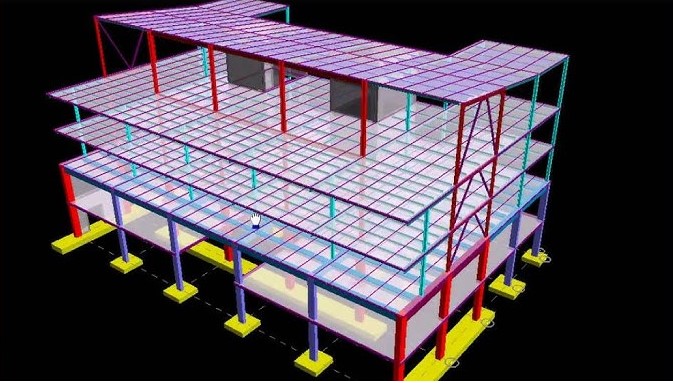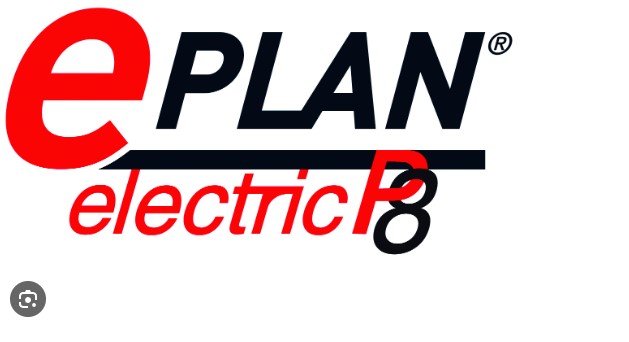
RAM Concept: Concrete Slab Design Software
October 16, 2024Bentley RAM Concept Overview
Bentley RAM Concept is a structural engineering software :
Best Structural engineering software : Bentley RAM Concept is a structural engineering software specifically designed for the analysis and design of reinforced concrete floors, slabs, and mat foundations. It is widely used by structural engineers to model and analyze complex slab systems for both gravity and lateral loads, offering sophisticated tools for the detailed design of post-tensioned and reinforced concrete slabs. RAM Concept is part of Bentley Systems’ suite of structural design and analysis software, and it integrates seamlessly with other Bentley products, making it a key component in larger Building Information Modeling (BIM) workflows.

RAM Concept: Concrete Slab Design Software :
### Key Features of Bentley RAM Concept:
#### 1. **Advanced Concrete Floor and Slab Design:**
RAM Concept excels at designing concrete floor systems, including flat slabs, flat plates, two-way slabs, and mats. It can model both reinforced and post-tensioned concrete floors, which are often used in high-rise buildings, parking structures, bridges, and other complex structures.
#### 2. **Finite Element Analysis (FEA):**
At the heart of RAM Concept is a **finite element analysis engine** that allows engineers to model complex slab systems in 3D and analyze the effects of loads (gravity, lateral, live, dead, etc.) in great detail. The FEA ensures that users can capture stress distributions, deflections, and slab performance with a high level of accuracy.
#### 3. **Post-Tensioning Design:**
RAM Concept includes advanced tools for the design of **post-tensioned (PT) concrete slabs**. It allows engineers to specify the placement and tensioning of post-tensioning tendons and analyze their impact on slab performance. This is particularly useful for projects like parking structures and commercial buildings where post-tensioning can help create longer spans and thinner slabs.
#### 4. **Load Analysis:**
The software supports a wide range of load types and combinations, including:
– **Gravity Loads**: Dead, live, and superimposed loads.
– **Lateral Loads**: Wind, seismic, and other lateral forces.
– **Dynamic Loads**: RAM Concept can handle dynamic loads for vibration-sensitive structures.
This load analysis can be performed for individual floors or the entire structural system, helping engineers ensure their designs meet required standards for safety and performance.
#### 5. **Serviceability Checks and Deflection Analysis:**
RAM Concept includes **serviceability checks**, including deflection analysis. Engineers can assess both short-term and long-term deflections, ensuring that floor slabs meet serviceability requirements and provide adequate performance under real-world conditions.
#### 6. **Punching Shear Analysis:**
RAM Concept includes detailed analysis for **punching shear**—a critical check for two-way slabs at column locations. This feature ensures that the slab design can withstand the localized shear forces near columns, minimizing the risk of punching shear failure, which is a common failure mode in flat slabs.
#### 7. **Automated Reinforcement Design:**
The software automatically calculates the required reinforcement based on load combinations and design codes. It also provides detailed bar layouts, specifying the required reinforcement in both the top and bottom of the slab. RAM Concept can also produce reinforcement drawings, reducing the time engineers spend on detailing.
#### 8. **Code Compliance and Design Standards:**
RAM Concept supports a wide range of **international design codes**, making it suitable for projects around the world. Some of the supported design codes include:
– **ACI 318** (American Concrete Institute)
– **BS 8110** (British Standards)
– **Eurocode 2** (European design code for concrete structures)
– **AS 3600** (Australian Standard for concrete structures)
– **CSA A23.3** (Canadian Standards)
RAM Concept: Concrete Slab Design Software :
These codes ensure that the software outputs comply with local and international regulations, providing confidence in the safety and reliability of the design.
#### 9. **Integration with BIM and Structural Models:**
RAM Concept integrates with **Bentley’s STAAD.Pro** and **RAM Structural System**, allowing engineers to import and export models between different design software. This seamless integration is valuable for projects where both building superstructure and substructure designs are interconnected, enabling collaboration between architects, structural engineers, and other stakeholders.
In addition, RAM Concept supports **IFC (Industry Foundation Classes)** for BIM workflows, ensuring that it can communicate effectively with other BIM platforms like Autodesk Revit.
#### 10. **Reporting and Documentation:**
The software generates detailed reports that include load summaries, deflection data, reinforcement requirements, and serviceability checks. These reports are highly customizable, allowing engineers to document their designs in formats that meet the needs of clients, contractors, and regulatory bodies.
#### 11. **Slab Vibration Analysis:**
RAM Concept can perform **vibration analysis** of concrete floors, which is important in cases where occupant comfort is a concern, such as in office buildings or hospitals. The software helps engineers evaluate vibration behavior and make necessary design adjustments to meet comfort criteria.
#### 12. **2D and 3D Visualization:**
RAM Concept provides both **2D and 3D visualization tools** for inspecting and reviewing the slab geometry, load application, and reinforcement details. This visualization capability helps engineers better understand how their design will perform under various loading conditions and assists in communicating designs to stakeholders.
#### 13. **Nonlinear Analysis:**
RAM Concept offers **nonlinear analysis** capabilities, enabling more accurate modeling of certain behaviors, such as cracking and creep in concrete. This type of analysis is especially useful for designing large or complex structures where standard linear assumptions may not fully capture the behavior of the slab.
### Use Cases:
– **High-Rise Buildings**: RAM Concept is commonly used in the design of reinforced and post-tensioned concrete floor systems in high-rise buildings, where long spans and lateral load resistance are critical.
– **Parking Structures**: The software’s post-tensioning design capabilities are ideal for parking structures, allowing for long, unsupported spans.
– **Hospitals and Office Buildings**: Vibration analysis ensures that floors meet occupant comfort standards, which is particularly important in sensitive environments like hospitals.
– **Bridges and Infrastructure Projects**: RAM Concept can be used to design large concrete slabs and mats for bridges and infrastructure projects where complex load combinations and nonlinear behavior need to be considered.
### Strengths:
– **Comprehensive Floor Design**: RAM Concept is tailored specifically for floor systems, making it more focused and feature-rich than more general-purpose structural design tools.
– **Post-Tensioning Support**: Its robust support for post-tensioned systems makes it particularly valuable for projects that require thinner, more economical slabs.
– **FEA-Based Analysis**: The use of finite element analysis allows for accurate simulation of slab behavior under various load conditions.
– **Seamless Integration with Other Tools**: RAM Concept integrates with other Bentley software, supporting a broader workflow from structural analysis to BIM coordination.
### Competitors:
– **SAFE (CSI)**: A similar software focused on slab and foundation design, also using finite element analysis.
– **ADAPT-PT/RC**: Another post-tensioning and reinforced concrete design software used for two-way slabs and mat foundations.
Finally, Bentley RAM Concept is a powerful, specialized tool for structural engineers working on concrete slab systems, offering advanced analysis, design capabilities, and integration with other engineering and BIM tools. It simplifies the design of complex slab systems, including post-tensioned and reinforced concrete, making it a key solution for modern infrastructure and high-rise building projects.

